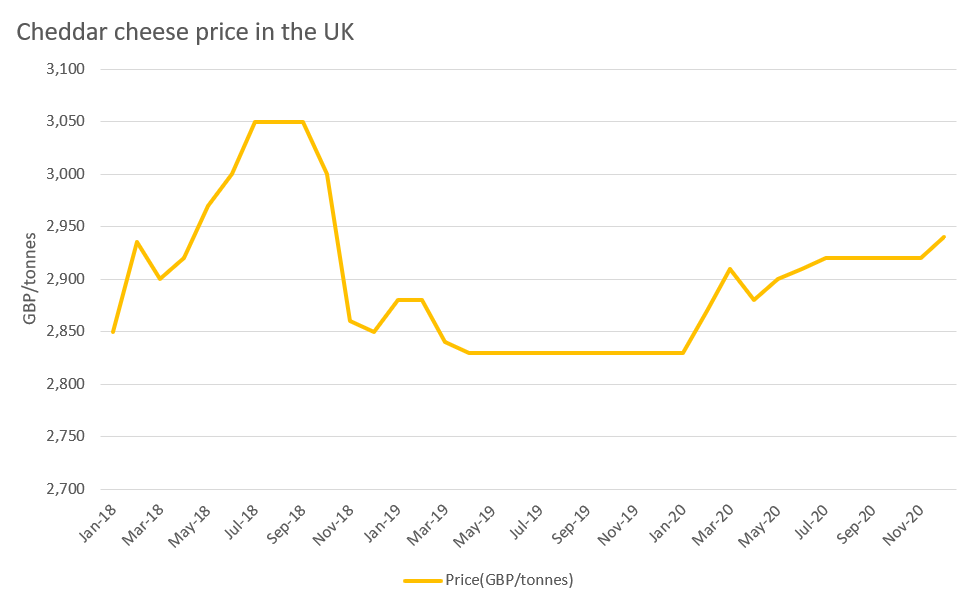Brexit and the UK Cheese Market: Who will move the UK’s cheese?
“Welcome to Brexit. Sir, I am so sorry.”
On the first official day of Brexit, UK truck drivers got stuck in the dutch border control due to the ham and cheese sandwich they prepared for lunch. The security control guides restricted the entrance of ham and cheese sandwiches and other dairy products, arguing that unauthorized dairy products may have harmful bacteria, which can spread animal diseases in the EU.
This situation shows how the custom territory has changed entirely after Brexit. According to the agreement, which entered into force on 1 January 2021, individuals cannot freely move the product of animal origin (POAO) food, including meat and dairy products. Only official custom processes between two counterparties are allowed. Since many ferry and truck drivers, tourists, and other passengers weren’t aware of the updated restriction on the first day of Brexit, they had to throw away their lunch sandwiches and fresh dairy products before crossing the border.
83% of UK Cheese goes to the EU
The majority of cheese produced in the UK is Cheddar, which accounts for 70% of total cheese production. On top of that, Cheshire cheese, Mozzarella, cottage, fromage frais, and other soft cheese also occupy a small proportion of UK cheese production. Cheddar originated from a small village in Somerset province in England, representing 55% of the cheese production volume, according to the Agriculture and Horticulture Development Board (AHDB) recent production data. The graph above shows Cheddar wholesale prices during the last five years, and the price has been stable since early 2019, showing a gradual increase in the UK market.

Source: AHDB(Agriculture and Horticulture Development Board), Tridge
From 2013 to 2017, the UK exported 150,000 tonnes of cheese annually and became one of the top ten exporters in the global cheese market, with an annual record of more than GBP 650 million(USD 889 million). British cheese’s main export destinations are EU countries, Ireland, the Netherlands, and France, which account for 83% of the total export volume. British cheese is also famous in North American countries, the US, and Canada. The two countries combined represent nearly 10 percent of the UK’s exports, followed by UAE, Lebanon, and East Asian countries.
Share in UK Cheese exports by countries

Source: Tridge
Challenges for UK Cheese
Despite the tariff-free agreement between the UK and the EU, the UK’s export volume is expected to decrease after Brexit due to the additional administrative processes, which will eventually result in a higher price in the EU market. As explained above, 83% of UK-produced cheese goes to the EU, and now the exporters have to submit an EU Export Health Certificate (EHC) signed by a veterinarian for each load. This newly implemented documentation process is also a cost burden for the cheese industry since the exporters have to pay an additional cost for each order, around GBP 180(USD 246).
This could cause a revenue loss of cheese producers in the UK, especially those who rely heavily on the EU market. The industry argues that the additional administrative costs would cause a delay in the export process and a sharp decline in export volume to the EU market, leading to the British cheese shortage in the EU.
Post-Brexit Disruptions in the Cheese industry
UK cheese suppliers are seeking a new way to survive in the Post-Brexit era. One way is to substitute the previously imported cheese from EU countries to the cheese produced in the UK. Before Brexit, Brie cheese from France, Feta from Greece, Manchego premium from Spain could be imported from EU countries without any trade barriers. The import volume is expected to fall in the future as cheese imported from the EU faces extra challenges in customs. UK cheese producers could fill the gaps by substituting imported cheese with domestic cheese. Nevertheless, there is a risk that the oversupply could lead to cheese surplus and a sharp decline in cheese prices in the domestic market.
On top of that, cheese producing firms could move out to the EU or build a distribution center in the EU countries to avoid extra administrative costs. Indeed, after experiencing a 20% revenue loss after Brexit, a cheese producing farm in Cheshire is trying to build a distribution center in France with a one million pound investment to avoid the extra documentation processes, costs, and further delays. However, it is still questionable whether setting up new channels is sustainable for the long term for the UK as producers would be promoting business in the EU to avoid additional costs.
Sources:
- AHDB(Agriculture and Horticulture Development Board), “GB milk markets at risk of disruption.”
- AHDB(Agriculture and Horticulture Development Board), “Dairy Market Dashboard”
- BBC, “Post-Brexit trade: Pricey wurst and cheesy leftovers.”
- BBC, “Tesco: Brexit 'could see people choose cheddar over brie'”
- London School of Economics and Politics(LSE), “The impact of Brexit on the UK dairy sector.”
- NBC, “'Welcome to Brexit': Confiscated ham sandwich highlights new reality for U.K., E.U.”
- Politico, “Brexit bites into profits of UK cheese producers.”
- The Brussels Times, “Banned after Brexit: Entering the EU with a cheese sandwich."
- The Guardian, “Cheshire cheesemaker says business left with £250,000 'Brexit hole'”
- The Guardian, “Move to EU to avoid Brexit costs, firms told”
- Tridge, Export and Import data on HS Code 0406 Cheese and Curd


